CERF 2015 - 2017 Governing Board Elections
Submit your vote by 10 July 2015
Voting is now open for the CERF 2015 - 2017 Governing Board Elections. Only CERF Members are eligible to vote. Open positions include President-Elect, Secretary, Member-at-Large, and Student Member. Only one (1) individual may be selected for each position, except for Member-at-Large, for which you will seelect two (2). Please submit your vote by midnight on July 10th using our online ballot form. As an alternative, you may request a paper ballot by emailing [email protected].
On behalf of the current and future Governing Board members, thank you for participating in this important election.
Meet the 2015 - 2017 CERF Governing Board Candidates:
President-Elect | Secretary | Member-at-Large | Student Member
Candidates for President-Elect
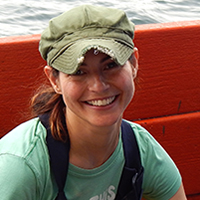 |
Leila J. Hamdan, PhD
Background: I am an Assistant Professor of Molecular Microbial Ecology and the Associate Director of the Microbiome Analysis Center at George Mason University. I previously held the position of Research Microbial Ecologist at the U.S. Naval Research Laboratory where I also completed a National Research Council Postdoctoral appointment. In addition, I was a Faculty Adjunct at the Johns Hopkins University. I hold a MS in Biology, and a PhD in Environmental Science and Policy from George Mason University. My studies are designed to reveal the contribution of microorganisms to ecosystem function, to identify feedbacks between biotic and abiotic realms, and connect microbial ecology studies with other disciplines. Work in my laboratory is focused on the microbial biogeography of benthic habitats, and the impact of hydrocarbons on microorganisms associated with artificial reefs and coastal and shelf sediments. I am currently the PI on a study of the Deepwater Horizon Spill’s impact on artificial reefs in the Gulf of Mexico. I am confident that my service record is evidence of preparedness for the office of CERF President. I have served as AERS President (2008-2010), CERF Secretary (2009-2011), CERF Education Committee Chair (2008-2010), and currently, Chair of CERF 2015’s Scientific Program Committee. I have gained experience as an Associate Editor for Biogeochemistry and Special Editor for Limnology and Oceanography. Lastly, I have been Chief Scientist on several oceanographic expeditions. These activities and the example of those I have worked with help me craft a leadership style focused on teamwork, consensus and engaging difficult tasks head on.
Vision Statement: CERF has been the most consistent source of professional growth in my career, and it has been logarithmic during past board service. I have enjoyed the ability to have a role in “steering our ship.” CERF’s ship takes form primarily through conferences, and a scholarly journal that grows in visibility and scientific relevance due to the diligence of Governing and Editorial Board members. The dedicated members who volunteer allow CERF to take shape, and retain CERF’s history and character. Part of CERF’s character is the tradition of extending opportunities to members from all career stages and disciplines to be a part of her “crew.” I am so proud to have been a member of this crew. We must nurture this tradition of engagement so that CERF will remain an effective, and representative entity for estuarine and coastal science. If elected President, I will work to expand the corps of volunteers to create a deep bench of leadership talent that can identify and manage challenges. I will also work to sustain our institutional memory, much of which exists within the Affiliate Societies. Each Affiliate has a unique character born out of facets of their local environment. The Affiliates are a reactor for collaboration and identification of research, education, and management challenges. I will commit my energy to realizing the objectives of Visions III to strengthen and serve the needs of the Affiliates. I believe doing so will engage a feedback loop to grow CERF’s membership and specific expertise. As CERF President, I will honor our traditions, and tap into the well that Affiliates and members offer to our sustainability. I owe a debt to CERF for the doors it has opened to career, scholarship, and friendship for me. I aim to hold that door open for those ready to be part of CERF’s crew.
|
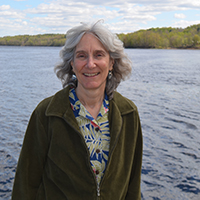 |
Hilary A. Neckles, PhD
Background: I am deeply honored to be nominated for President-Elect of CERF. I attended my first biennial conference in 1985 as a new PhD student, and was inspired by the collegial atmosphere, multi-disciplinary science, and synthetic thinking. To this day CERF remains my scientific home.
I received my PhD from the Virginia Institute of Marine Science in 1990. I benefitted by studying under the combined tutelage of seagrass ecologist Bob Orth and ecosystem modeler Dick Wetzel, and I learned the value of integrating observations from organismal to system scales. For the past 25 years I have been employed as a coastal research ecologist with the U.S. Geological Survey, first in Louisiana and since 1998, in Maine. My research focuses on evaluating and predicting responses of seagrass and tidal wetland systems to human and natural stressors. Over the span of my career my work has centered largely in the northeastern U.S., the Gulf of Mexico, and Chesapeake Bay, and has been improved by interdisciplinary collaborations in each region. Some of my more recent research emphases have included diagnosing invasive species impacts on eelgrass habitat and ecosystem services; modeling seagrass recovery from acute physical disturbances; and developing appropriate indicators and approaches for seagrass and salt marsh monitoring and assessment at multiple scales. My early training was in wildlife biology at the Univ. of Massachusetts (BS) and Univ. of Minnesota (MS), and in a former life I studied hydrologic influences on seasonally-flooded prairie wetlands in Manitoba, Canada, which actually share many ecological attributes with salt marshes. My ultimate goal is to develop scientific information with direct utility for management. To this end, I interact closely with coastal managers and decision makers throughout the research cycle, from identifying information needs and formulating hypotheses to applying research results.
I have provided national service to my organization in various capacities, including sitting on USGS strategic planning teams for ecosystem science and drafting coastal research budget initiatives. In addition, I coordinated USGS wetland ecosystem research for three years during a stint in the Washington DC area headquarters. I served CERF as an Associate Editor of Estuaries and Coasts for seven years (2001-2008). At the Affiliate Society level, I served on the NEERS Executive Board for 11 years (2003-2014) as Program Chair for the spring and fall regional conferences.
Vision Statement: The strength of any organization lies in its members. CERF’s membership spans scientific disciplines, professional responsibilities, career stages, and geographies, with a shared commitment to coastal and estuarine resources. Our society links scientists and managers, students and mentors, policy makers and educators, data collectors and data synthesizers –relationships that are fostered through multiple avenues of communication. Stellar biennial conferences, a journal with ever-increasing impact, outreach publications, and web services all contribute to valuable information exchange. I would work diligently with the Governing Board to maintain and enhance our members’ opportunities for effective communication within CERF and outside our boundaries.
I am interested particularly in strengthening the relationships between CERF and the regional Affiliate Societies. I have been an active member of the Atlantic, Gulf, and now New England Estuarine Research Societies. With relatively frequent meetings and broad membership, the Affiliate Societies are both incubators for ideas and conduits for action. In much the same way that “all politics is local,” CERF’s success in achieving research, education, and communication goals can be increased through activities at the regional level. In recent years CERF has expanded some business services to the regional societies and has facilitated inter-society collaboration. I would like to further cultivate CERF’s support of the Affiliates, while in turn promoting the importance of regional contributions to advancing the CERF mission and goals.
The work of CERF has never been more important than it is today. CERF provides numerous and varied channels for the diverse expertise and interests of our members to converge on complex coastal and estuarine issues. It would be an extreme privilege to devote energy to CERF as President-Elect.
|
Candidates for Secretary
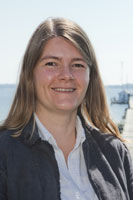 |
Lora A. Harris, PhD
Background: Since my career in marine science began I have been lucky enough to enjoy office space with views of the Elkhorn Slough, Waquoit Bay, Narragansett Bay, Plum Island Sound, and now the Chesapeake Bay. I was very fortunate to be offered an internship in Dr. Michael Foster’s lab group at Moss Landing Marine Laboratories in the mid-1990s after dropping out of high school. My diving experience was put to use working with his graduate students in the kelp forests just off Pebble Beach. This made for a wonderful introduction to coastal ecology and certainly aided my acceptance to Smith College as an undergraduate, where I worked in Waquoit Bay running experiments for my honors thesis and also participated in a saturation diving mission using NOAA’s Habitat Aquarius in Key Largo, Florida. The most formative years of my scientific training were spent at the University of Rhode Island’s Graduate School of Oceanography, where I was advised by Dr. Scott Nixon and carried out both mesocosm experiments and a modeling project that has informed the way I run my own lab today. I received my PhD in 2006 and worked as a post-doc at the Marine Biological Laboratory’s Ecosystem Center before moving to Solomons in 2007. As an estuarine ecologist at the University of Maryland Center for Environmental Science, my faculty appointment at the Chesapeake Biological Laboratory affords me opportunities for work in diverse coastal and estuarine ecosystems. My research combines field and modeling approaches to improve our understanding of nutrient dynamics, primary production, and ecosystem structure and function. Occasionally I extend those research questions to higher trophic levels, especially in the ways that habitat-forming species like seagrasses or oysters impact ecosystem processes. I work closely with state and regional agencies in both a research and advisory capacity. Making my work relevant to managers and of impact to informing and addressing environmental issues is a defining objective of my research and career.
Vision Statement: CERF meetings are attended by a truly diverse membership and the work highlighted in our publications and conferences is evidence of our success in meeting the CERF mission to advance understanding and stewardship in estuaries and coasts. The role of the CERF secretary is to document meetings of the membership and Governing Board, and aid in distributing information related to Federation activities while also contributing to the general governance of CERF. My current role on the board of the Atlantic Estuarine Research Society as Member-At-Large has provided me with experience working with fellow board members and I welcome the opportunity to provide service to CERF in a way that will continue our excellent record of promoting estuarine and coastal science. I am especially keen to expand and promote our strength in serving as an integrated society that is inclusive of both academic researchers and practitioners from the management and policy community. I think there are exciting ways we can highlight this special characteristic of CERF and offer new avenues for enhancing our members’ work in science application. The Federation will face certain change in the next year as Executive Director Mark Wolf-Armstrong retires and a transition in Presidents occurs. I am prepared to engage from day one in the needs related to these transitions while also continuing to work on initiatives put in place to expand membership, re-vamp our communications strategy, and provide new ways to support early career members.
|
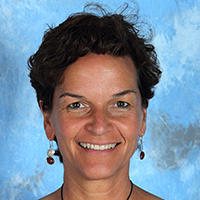 |
Martha Sutula, PhD
Background: I am a Principal Scientist and Head of the Biogeochemistry Department at SCCWRP, a research institute that works to develop a scientific foundation for informed water-quality and natural resource management. My training is in coastal ecology and biogeochemistry, with a PhD from Louisiana State University, Department of Oceanography and Coastal Sciences, and post-doctoral research experience at Tulane University Department of Ecology and Evolutionary Biology. Since joining SCCWRP in 2001, my research has been focused on understanding processes controlling nutrient and carbon transport and transformations in Mediterranean streams and “bar-built” estuaries. More recently, I’ve focused on identifying ecological thresholds or tipping points of eutrophication effects on stream and estuarine biological communities. An important component of my work is collaborating with federal, state, and local agencies to transition this science into improved management of California coastal watersheds; examples of this include my work as lead scientist to CalEPA supporting development of nutrient criteria for streams, lakes, and estuaries. In addition, I serve on national and regional technical workgroups and scientific advisory panels dedicated to managing and mitigating the effects of climate change and other human activities on our coastal zone.
Vision Statement: I’ve been a member of CERF since I joined as a graduate student in 1995; since then, CERF has been my community—a key part of my professional growth and network as a scientist. I would like to help keep CERF strong by “paying it forward,” seeking ways to recruit into CERF new generations of coastal scientists. I believe that I have the experience and vision to make this happen. Over the past six years, I have been actively involved in leading the California Estuarine Research Society (CAERS), first as Treasurer/Secretary then as President. As CAERS President, I am currently serving on the CERF Governing Board and lead the Membership Committee, working with a wonderful group of colleagues to develop strategies for how we can begin to reverse the declining trend in CERF membership. We have focused on three things. First, we are working to strengthen the affiliate societies by considering how CERF can provide a core set of business services that will allow us to streamline operations, which would allow us to focus our valuable time on connecting with our members. Second, we are seeking ways to actively involve students in CERF, providing them with growth, leadership, and networking opportunities. Third, we are considering how to expand the package of membership benefits to CERF members to provide the value that gives us the long-term continuity in membership. To capitalize on the momentum that we have built, I would like to have the opportunity to continue this work as Secretary on the CERF Board.
|
Candidates for Member-at-Large
Two positions available
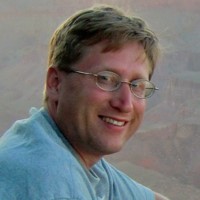 |
Mark Brush, PhD
Background: I am an Associate Professor of Marine Science at the Virginia Institute of Marine Science (VIMS), part of the College of William and Mary. I received a BS in Biological Sciences from Cornell University in 1995 and a PhD in Biological Oceanography from the University of Rhode Island in 2002, after which I joined VIMS as a postdoc and transitioned to the faculty in 2006. I am a coastal systems ecologist and modeler. My group focuses on the ecology of coastal marine ecosystems, primarily estuaries and lagoons, through both field-based ecological investigations and synthetic, interdisciplinary ecosystem simulation modeling. We are particularly interested in systems with a diversity of primary producers, their response to nutrient enrichment or reduction, the processes of eutrophication and oligotrophication, and the interaction of these processes with climate change. The models we develop tend to follow an alternative, reduced-complexity approach and are used for both heuristic ecosystem analysis and application to management questions; we have recently developed the capability of serving these models online for direct use by managers, educators, and other stakeholders. I teach courses in interdisciplinary field research, ecosystem modeling, and estuarine ecology, and mentor graduate students in their MS and PhD programs. I began my association with CERF through attendance of my first NEERS meeting in 1996, followed by my first CERF meeting in 1997. I had the honor of serving as President of AERS (2012-14) during which I was also on the CERF Governing Board, and have also served as AERS Program Chair (2009-11), Nominations Chair (2015-present), on the CERF Education Committee (2010-14), on the CERF Ad Hoc Governance Task Force (2014-15), and on the CERF Affiliate Society Presidents’ Committee (2014-present).
Vision Statement: CERF and its affiliates have been my professional home since starting graduate school. Beginning with my first professional meeting in 1996 at NEERS, I was immediately captivated by the concept of CERF (then ERF) as the national society with a series of regional affiliates, and was amazed at the blend of high quality science, collegiality, and friendliness that characterize our society and its meetings. CERF and its affiliates have done a great deal to enhance my own professional career and that of my students, and I have always been passionate about giving back. I was especially delighted to serve on the CERF Governing Board in 2012-14 as AERS President, during which I focused on strengthening the linkages between CERF and its affiliates, and among the affiliates, and served on the Education Committee. I am excited to rejoin the Governing Board and contribute to leading our wonderful society into the future. This is an exciting time for CERF and one that will need dedicated leadership, as we navigate a future which will see the recruitment of a new Executive Director, require us to grapple with declining membership, and call us to broaden our impact on both science and society, while maintaining excellence in our services, conferences, and journal. The best way to meet these challenges is through embracing our long-standing excellence in coastal science and “bottom-up” culture of service, by continuing to strengthen the CERF–affiliate partnership, and by engaging our entire membership – and especially the next generation – through dedicated leadership, effective communication, increasing opportunities for members to get involved, and cultivating the next generation of leaders.
|
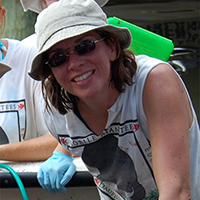 |
Ruth Carmichael, PhD
Background: I am a Senior Marine Scientist at the Dauphin Island Sea Lab (DISL) and Associate Professor of Marine Sciences at the University of South Alabama. I came to Alabama from Maine, where I was Assistant Professor of Marine Science at the University of Maine-Machias. I hold an MA (1998) and PhD (2004) from Boston University at the Marine Biological Laboratory in Woods Hole, MA. I am Director of DISL’s Manatee Sighting Network and operate the Alabama Marine Mammal Stranding Network. I serve as an Editor for four scientific journals, including CERF’s electronic publication, Coastal and Estuarine Science News (CESN). I am a Co-Chair of the Science Advisory Committee for the Mobile Bay National Estuary Program and Past President of the Gulf Estuarine Research Society (GERS) through which I served on the CERF Governing Board from 2011-2013. I have been a member of CERF for 15 years and was the Workshops Chair for the CERF biennial meetings from 2007-2011. I was a student member of the New England Estuarine Research Society (NERRS) and eager to continue to serve as a GERS member when I relocated to the Gulf of Mexico coast. My research on the Atlantic and Gulf of Mexico coasts has focused on place-based applied studies that define and seek mechanistic understanding of anthropogenic effects on ecosystems by quantifying effects on habitat, food resources, and the biology and physiology of target organisms (from oysters, clams and horseshoe crabs to dolphins and manatees).
Vision statement: I strongly believe in the CERF mission to promote research, support education and facilitate communication among members from all areas of the field of estuarine and coastal science. In addition to this core mission, to me, one of the greatest strengths of CERF is its sense of community and fellowship; making science collaborative, multidisciplinary, and enjoyable. CERF is often referred to as a family of researchers, managers, decision-makers and students. I hope to continue my work with CERF as a member-at-large to find new and creative ways to support the CERF core mission within this successful familial structure. I believe that this unique signature "feel" of CERF sets the Federation apart by giving it strength through member investment and participation. The greater accessibility to and clear lines of communication the members and Affiliate Societies have with CERF leadership have made this large organization feel intimate and comfortable. As the Federation advances to improve efficient and effective leadership in the field of estuarine and coastal science, I believe working to retain this familial legacy of CERF (that is often handed down from advisors and mentors to new generations of students and others entering the field) will be critical to ensure members continue to benefit from all the research and educational opportunities provided by CERF. For this reason, I hope to promote opportunities for longstanding and senior members to continue to be active in working with and promoting participation by younger and new members. I believe these efforts will keep the federation vital and relevant as we continue to grow and respond to members’ needs; benefiting from both the knowledge of the past and the new ideas of the future.
|
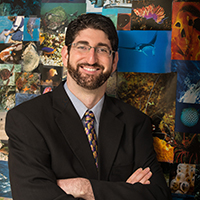 |
Ben Fertig, PhD
Background: Just starting as a Senior Coastal Scientist at Versar, I co-manage NOAA and Maryland Department of Natural Resource fisheries projects, support quantitative analysis for federal and state fisheries projects, and participate in coastal team business development efforts. Concurrently, I recently started as a Research Scholar at the Ronin Institute where the theme of my research is ecosystem dynamics of multiple simultaneous anthropogenic stressors and their complex interactions in marine, coastal, estuarine, and wetland systems. With my research, I aim to understand, describe, and communicate the mechanisms and feedback loops of these complex interactions. As a Postdoctoral Associate and then Visiting Scientist at Rutgers University (2011-2016) I evaluated the initial ecological and social impacts of recent New Jersey legislation regulating fertilizer nitrogen loads to Barnegat Bay-Little Egg Harbor Estuary by utilizing isotopic signatures, seagrass demographics, social response, and communication products. Further, I developed an Index of Eutrophication designed to assess nutrient loading and eutrophication in Barnegat Bay-Little Egg Harbor Estuary in support of nutrient management planning. My doctoral training and research at the University of Maryland Center for Environmental Science demonstrated that stable nitrogen isotopes in oysters (Crassostrea virginica) are able to identify anthropogenic nitrogen sources and are constrained by gradients of biogeochemical processes. I earned a BA in Biology from Brandeis University in Waltham, MA, and first learned of CERF in 2002 (ERF back then) while an intern for MIT Sea Grant. I am grateful for the opportunity to have been emailing with many of you recently in my capacity as the Abstract Database Manager for CERF to serve the well-oiled CERF machine. This service builds on roles as a member of the CERF Science Program Committee (2014-2015), the Social Media Committee (2013-Present), and as co-chair of the Student Activities Committee (2012). I also serve my regional affiliate society, AERS, as the Program co/chair (2011-Present).
Vision Statement: CERF and its affiliate societies have strong leadership teams and opportunities to be visionary. As a Member-at-Large, my goal is to support the organization, especially its membership as a whole, across all affiliate societies with an interconnected three point approach. 1) Values – supporting and enhancing the value of CERF to its affiliates and members while upholding organizational values of research/knowledge, collaboration, integrity/ethics, relevancy/impact, education, synthesis/integration, and outreach. For instance, I seek to help identify and address changing needs as CERF membership demographics change while continuing to promote research, education, policy, and communication in the current international socioeconomic climate. 2) Connectivity – through bienniel CERF conferences to more frequent affiliate conferences to social media and other approaches, I anticipate serving to enhance the means and impacts of connecting individuals within and beyond CERF/Affiliate membership – both during and in between in-person gatherings so as to build on the already strong CERF identity, community, and brand. Specifically, I seek to expand CERF’s membership, social media presence, webinar series, and to continue reaching out globally to individuals and institutions sharing our mission and goals. 3) "Character" – I will strive to maintain and enhance the core of CERF’s character, which I respectfully describe as "work hard, play hard". I anticipate helping to enhance both the already substantial impact of Estuaries and Coasts and the fun of participation in CERF through a variety of opportunities. As a Member-at-Large, I will work with the Governing Board to encourage this character through the next term. Thank you for your consideration.
|
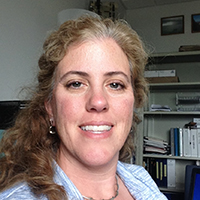 |
Jamie Vaudrey, PhD
Background: My research interests are in the area of ecosystem dynamics in the coastal zone, specifically in the effect of land-use on the coastal environment and how anthropogenic changes to the landscape may change our coastal ecosystems. Understanding and communicating the relationship between human activities and expression of eutrophication in large estuaries and small embayments is critical to addressing water quality and habitat degradation in a changing world. I have worked on modeling the relationship between nitrogen input and hypoxia in Narragansett Bay and on developing a model relating nitrogen load to trophic status in Long Island Sound embayments. Seagrass systems, another focus area, are sensitive indicators of a desirable state of water quality. I have been involved with a variety of seagrass projects throughout New England, including assessing genetic diversity of eelgrass, evaluating restoration projects, and developing a model to assist with the siting of restoration.
My involvement with marine science began at Wellesley College, where I received a BA in Biology with a minor in Philosophy and had the opportunity to conduct a senior research project at the Wells Estuarine Research Reserve in Maine. Following college, I entered the field of science education, working for the New Hampshire Audubon as a naturalist; at The Newfound Harbor Marine Institute in Big Pine Key, FL for three years, finishing my tenure there as the Intern Coordinator; and as the Oregon Area Manager for Science Adventures, a science education company. I completed my PhD in Oceanography at the University of Connecticut in 2007 and worked as a Postdoctoral Associate on two separate projects, one on seagrass in Long Island Sound and one developing an ecosystem model of hypoxia in Narragansett Bay. In 2010, I started my current position as Assistant Research Professor with the Department of Marine Sciences, University of Connecticut.
Vision Statement: I was introduced to CERF by my mentor roughly 15 years ago and was welcomed into the coastal science community by colleagues throughout the Federation and particularly by my affiliate society, New England Estuarine Research Society (NEERS). CERF has provided the opportunity to engage with colleagues; explore topics beyond my expertise; and access a community of scientists, managers, and educators seeking to protect and improve our coastal zone. These aspects of CERF are at the heart of why I care about the Federation and what I would seek to preserve and improve upon as a Member-At-Large. Digital tools allow us to be more connected, and CERF should continue to utilize these tools to provide services to our members, such as educational opportunities and remote access to select conference activities. While the digital era allows us greater access to content, in-person connections are also vital to developing a community and fostering collaborations. My involvement with NEERS as the President and in my ongoing role as Webmaster have highlighted the benefit of meeting with people twice a year to share ideas and progress. The CERF Governing Board provides the conduit for better linking affiliate societies together, for greater exchange and to improve operations at the affiliate level. As a Member-at-Large, my major focus will be working with CERF and the affiliates to expand services to members, foster greater connection among the community, and increase membership. My experience with the governance of NEERS and my time on the CERF Governing Board as an Affiliate President, coupled with my background in communication and research, have prepared me to meet these goals.
|
Candidates for Student Member
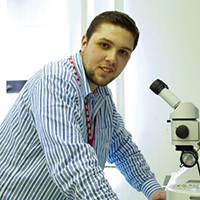 |
Jeff C. Clements, BSc (honours), PhD Candidate
Background: I’m a benthic ecologist and a fourth year PhD candidate at the University of New Brunswick (UNB) in Atlantic Canada. My dissertation research aims at understanding the biological effects of coastal ocean acidification on benthic invertebrates, namely bivalves. Specifically, my work assesses the effects of sedimentary porewater acidification on the burrowing behaviour, recruitment, and physiology of juvenile soft-shell clams utilizing laboratory, mesocosm, and whole-field approaches. Prior to enrolling in the PhD program at UNB, my undergraduate honours research at Cape Breton University (2011) centered around the feeding ecology of the northern moonsnail along the northwest Atlantic coast in Cape Breton Island (Nova Scotia, Canada), specifically assessing shifts in predatory behaviour across moonsnail ontogeny. I am also currently involved in a number of collaborative projects, including a regional experiment aimed at understanding the effects of ocean acidification on aspects of the American lobster and an international collaboration with Iranian scientists involving benthic community structure in the southern Caspian Sea. Alongside my ecological research, I’m also quite interested in the ways that scientists and educators can use social media to enhance outreach and learning.
Vision Statement: I firmly believe that a student representative in any scientific society can not only act as a channel of information between a society’s government, student members, and potential recruits, but can also play a key role in paving the future of the society and ensuring future success. As such, I envision my role as CERF’s student representative as a three-fold undertaking, aimed at: 1) insuring consistent communication between the CERF Governing Board and senior members, and its student members; 2) enhancing CERF student and early career researcher (ECR) recruitment; and 3) providing a voice for students and ECRs in establishing unique ideas for the successful progression of CERF. Given the international collaborations I have succeeded with, I will specifically focus on attracting new student and ECR members from international institutions/organizations and will work toward promoting the biennial conference on an international scale. I will also aim to learn more about what students and ECRs feel is important for a society to encompass in order to understand and begin implementing key societal components for the next generation of CERFers. As an outgoing student representative of CERF’s affiliate society in Atlantic Canada (ACCESS), I will strive to carry over much of the work that I’ve done there, which has seen novel changes and implementations for the society and the ways in which it communicates with its student members and beyond (not to mention one of the most diverse meeting attendances in ACCESS history). Furthermore, my experience in co-chairing the CERF Social Media Team has allowed me to garner various ideas for communicating with coastal researchers around the world in order to promote CERF membership. Given that CERF is recognized on an international scale and is a key society for coastal and estuarine researchers, educators, and policy makers, I feel that my past experiences, novel ideas, willingness to learn from others, and familiarity with the goals of CERF and its affiliate societies can promote student/ECR recruitment on an international scale and help CERF move forward as the coastal and estuarine science society, all while maintaining the strong societal activities that CERF currently employs for students, ECRs, and beyond.
|
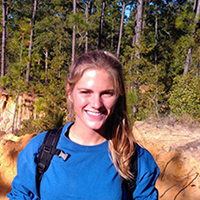 |
Mary Grace Lemon, MSc, PhD Student
Background: I am currently in my first year of my PhD in the School of Renewable Natural Resources at Louisiana State University. My dissertation research is focused on the subsurface hydrology of coastal plain river riparian wetlands in the southeastern United States. I am investigating the impacts of river modifications and climate change on the architecture of subsurface connections and vegetation source water within floodplain wetlands using a variety of techniques including isotopic tracers and remote sensing. Before coming to LSU, I completed an MSc degree in marine science at the University of North Carolina Wilmington where I studied the effects of oyster reef structure on particulate transfer within small tidal creek estuaries on the North Carolina coast (2012-2014). I received my undergraduate degree from Tulane University where I double majored in Ecology and Evolutionary Biology and Economics and completed an Honor’s thesis on breeding bird assemblages in Honey Island Swamp, LA (2007-2011). In addition, I held an internship at Dauphin Island Sea Lab where I studied ichthyoplankton and zooplankton communities on the coastal shelf of the Gulf of Mexico (2011-2012). My academic career can be described as eclectic however generally I have been focused on large scale physical drivers shaping coastal terrestrial and aquatic biota, particularly the hydrology of these ecosystems.
Vision Statement: I recently finished a two year term serving as the student representative for the Southeastern Estuarine Research Society (SEERS). During this period, I gained an appreciation for all the collaboration opportunities that CERF and the affiliate societies provide to students and young professionals. As the student representative of SEERS, I created a twitter and Instagram account for the organization in order to appeal to younger students. My goal as the CERF student representative would be to increase student and young professional membership and involvement within CERF and affiliate societies through the use of social media and other events geared toward younger generations during biennial meetings. For example, I believe education outreach is an important part of our responsibility as researchers and a fantastic way of doing this would be to start a short film session at CERF meetings. Other scientific societies have embraced this type of event and it has been extremely popular. Not only is it entertaining for members, but it promotes an artistic approach to communicating your research outside of written publication by appealing to not only younger generations but non-scientists as well. This is also a great way of incorporating broader impacts via educational outreach into research projects. As a liaison between the governing board and the younger established members and potential members, I would also put large effort into collecting suggestions from others in order to help strengthen the organization and its appeal to young researchers in the field. I hope to have the opportunity to represent young scientists in the field and work toward strengthening CERF for the benefit of current and future members.
|
|










